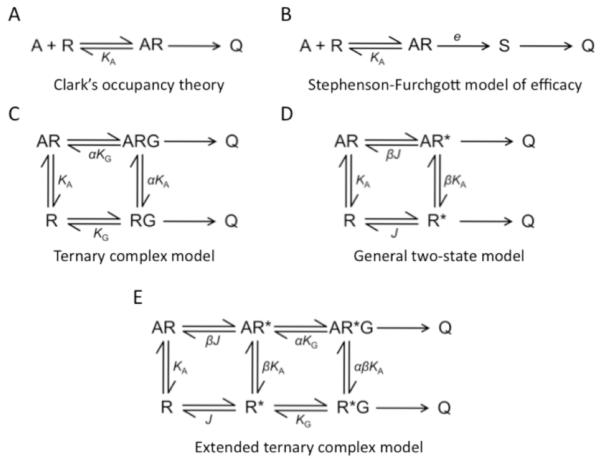Fig. (1). Models describing GPCR action.
(A), The earliest model describing the action of GPCRs was Clark’s occupancy theory [8]. In this model, the agonist (A) binds receptor (R) to from a complex (AR), which promotes the cellular response (Q). (B), Clark’s model was later updated to introduce a dimensionless quantity called the stimulus (S) and the concept of efficacy (e) [9, 10]. (C), The ternary complex model introduced the idea of a third component involved in GPCR signaling, the heterotrimeric G protein (G) [11]. The receptor must be in complex with the G protein to generate a cellular response. (D), The general two-state model introduced the idea that the receptor exists in two states, an inactive state (R) and an active state (R*) [15]. R* is the state that is capable of generating a cellular response. (E), The extended ternary complex model is a combination of the ternary complex model and general two-state model [13].

